Greenock Coin Hoard
On the 19th May 1955, three men were engaged in digging a trench for a sewer between Burns Road and Minerva Lane, Braeside, Greenock when they found an ancient cow horn around 10 inches long containing about 60 coins at a depth of four feet below the surface.
The horn disintegrated, and a few of the coins were destroyed or given to children and could not be traced. The 50 coins left were forwarded by the Procurator Fiscal for examination. They were all Scottish. Some 20 of the coins were retained by the Royal Scottish Museum, Edinburgh for their collections. The remaining 30 became part of the collections of the McLean Museum's collections.
Most of the coins were struck between 1543 and 1559 in the reign of Queen Mary. The hoard also contained testoons and coins from the reign of James VI. It is believed that the hoard was buried sometime in the mid 1570s.
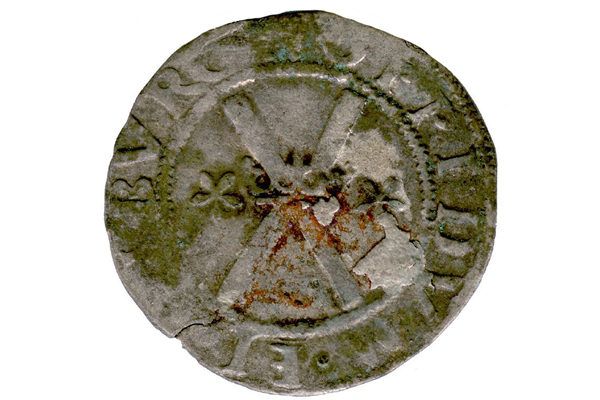
A Queen Mary Scottish Billon Bawbie
A Queen Mary Scottish Billon Bawbie, dating from the period 1542-1567, part of the Greenock Coin Hoard, made from billon (an alloy containing around 25% silver) - 1978.398 © McLean Museum and Art Gallery, Greenock.

A Queen Mary Scottish Billon Bawbie
A Queen Mary Scottish Billon Bawbie, dating from the period 1542-1567, part of the Greenock Coin Hoard, made from billon. - 1978.400 © McLean Museum and Art Gallery, Greenock.

A Queen Mary Scottish Billon Bawbie
A Queen Mary Scottish Billon Bawbie, dating from the period 1542-1567, part of the Greenock Coin Hoard, made from billon. - 1978.401 © McLean Museum and Art Gallery, Greenock.

A Queen Mary Scottish Billon Bawbie
A Queen Mary Scottish Billon Bawbie, dating from the period 1542-1567, part of the Greenock Coin Hoard, made from billon - 1978.402 © McLean Museum and Art Gallery, Greenock.

A Queen Mary Scottish Billon Bawbie
A Queen Mary Scottish Billon Bawbie, dating from the period 1542-1567, part of the Greenock Coin Hoard, made from billon - 1978.403 © McLean Museum and Art Gallery, Greenock.

A Queen Mary Scottish Billon Bawbie
A Queen Mary Scottish Billon Bawbie, dating from the period 1542-1567, part of the Greenock Coin Hoard, made of billon. - 1978.404 © McLean Museum and Art Gallery, Greenock.
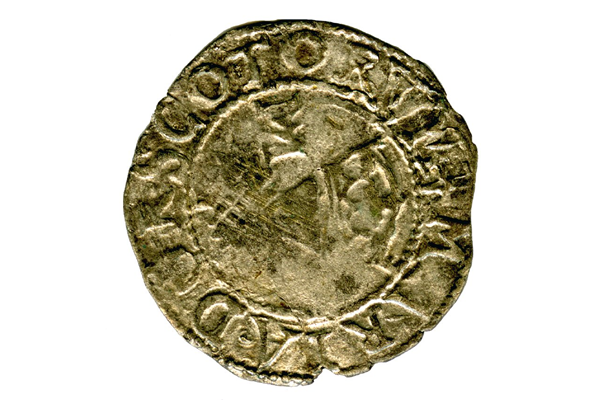
A Queen Mary Scottish Billon Bawbie
A Queen Mary Scottish Billon Bawbie, dating from the period 1542-1567, part of the Greenock Coin Hoard, made from billon.- 1978.405 © McLean Museum and Art Gallery, Greenock.

A Queen Mary Scottish Billon Bawbie
A Queen Mary Scottish Billon Bawbie, dating from the period 1542-1567, part of the Greenock Coin Hoard, made from billon. - 1978.406 © McLean Museum and Art Gallery, Greenock.

A Queen Mary Scottish Billon Bawbie
A Queen Mary Scottish Billon Bawbie, dating from the period 1542-1567, part of the Greenock Coin Hoard, made from billon. - 1978.407 © McLean Museum and Art Gallery, Greenock.

A Queen Mary Scottish Billon Bawbie
A Queen Mary Scottish Billon Bawbie, dating from the period 1542-1567, part of the Greenock Coin Hoard, made from billon. - 1978.408 © McLean Museum and Art Gallery, Greenock.

A Queen Mary Scottish Billon Bawbie
A Queen Mary Scottish Billon Bawbie, dating from the period 1542-1567, part of the Greenock Coin Hoard, made from billon. - 1978.409 © McLean Museum and Art Gallery, Greenock.

A Queen Mary Scottish Billon Bawbie
A Queen Mary Scottish Billon Bawbie, dating from the period 1542-1567, part of the Greenock Coin Hoard, made from billon. - 1978.410 © McLean Museum and Art Gallery, Greenock.

A Queen Mary Scottish Billon Bawbie
A Queen Mary Scottish Billon Bawbie, dating from the period 1542-1567, part of the Greenock Coin Hoard, made from billon. - 1978.411

A Queen Mary Scottish Billon Bawbie
A Queen Mary Scottish Billon Bawbie, dating from the period 1542-1567, part of the Greenock Coin Hoard, made from billon. - 1978.412 © McLean Museum and Art Gallery, Greenock.
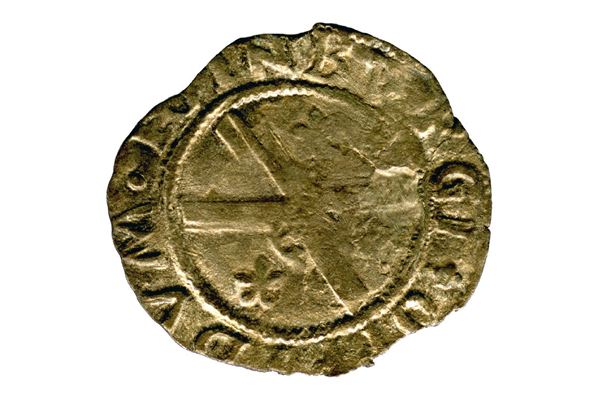
A Queen Mary Scottish Billon Bawbie
A Queen Mary Scottish Billon Bawbie, dating from the period 1542-1567, part of the Greenock Coin Hoard, made of billon. - 1978.413 © McLean Museum and Art Gallery, Greenock.
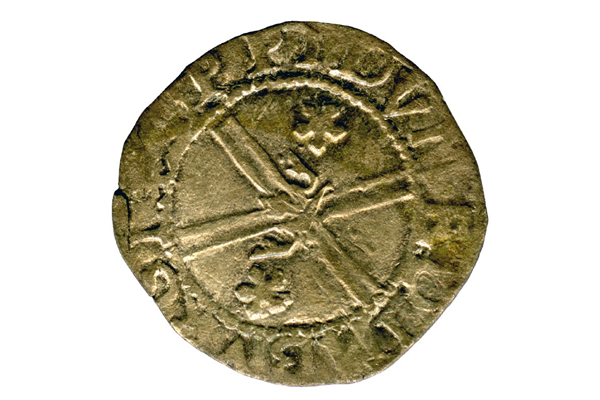
A Queen Mary Scottish Billon Bawbie
A Queen Mary Scottish Billon Bawbie, dating from the period 1542-1567, part of the Greenock Coin Hoard, made of billon. - 1978.414 © McLean Museum and Art Gallery, Greenock.

A Queen Mary Scottish Billon Bawbie
A Queen Mary Scottish Billon Bawbie, dating from the period 1542-1567, part of the Greenock Coin Hoard, made of billon. - 1978.415 © McLean Museum and Art Gallery, Greenock.

A Queen Mary Scottish Billon Bawbie
A Queen Mary Scottish Billon Bawbie, dating from the period 1542-1567, part of the Greenock Coin Hoard, made of billon. - 1978.416 © McLean Museum and Art Gallery, Greenock.

A Queen Mary Scottish Billon Bawbie
A Queen Mary Scottish Billon Bawbie, dating from the period 1542-1567, part of the Greenock Coin Hoard, made of billon. - 1978.417 © McLean Museum and Art Gallery, Greenock.

A Queen Mary Scottish Billon Bawbie
A Queen Mary Scottish Billon Bawbie, dating from the period 1542-1567, part of the Greenock Coin Hoard, made of billon. - 1978.418 © McLean Museum and Art Gallery, Greenock.
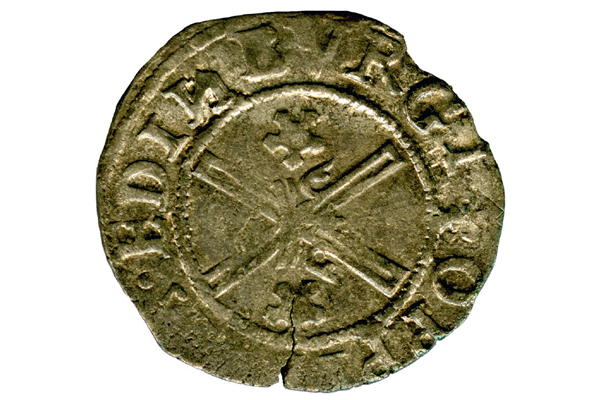
A Queen Mary Scottish Billon Bawbie
A Queen Mary Scottish Billon Bawbie, dating from the period 1542-1567, part of the Greenock Coin Hoard, made from billon. - 1978.419 © McLean Museum and Art Gallery, Greenock.

A Queen Mary Scottish Billon Bawbie
A Queen Mary Scottish Billon Bawbie, dating from the period 1542-1567, part of the Greenock Coin Hoard, made of billon. - 1978.420 © McLean Museum and Art Gallery, Greenock.
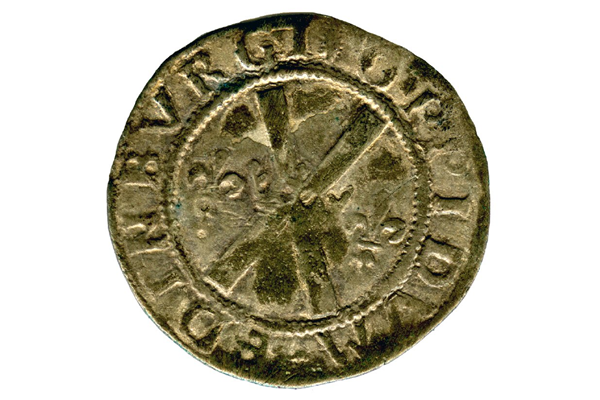
A King James V Scottish Billon Bawbie
A King James V Scottish Billon Bawbie, type 1A, dating from the period 1538-1539, part of the Greenock Coin Hoard, made of billon. - 1978.421 © McLean Museum and Art Gallery, Greenock.
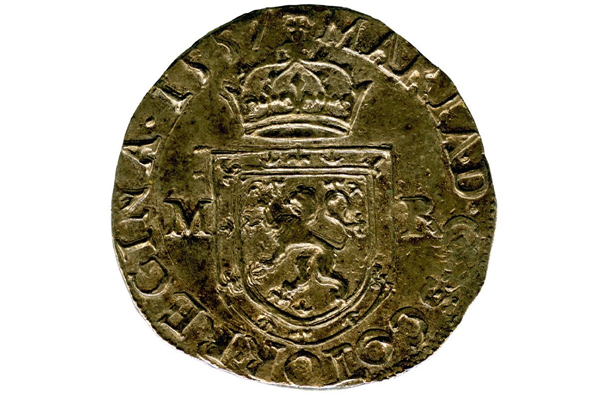
A Queen Mary Testoon coin
A Queen Mary Testoon coin from the Greenock Coin Hoard. The coin was valued at 5 shillings and was made of silver. This example is dated 1557 from the first period, type III. - 1978.422 © McLean Museum and Art Gallery, Greenock.
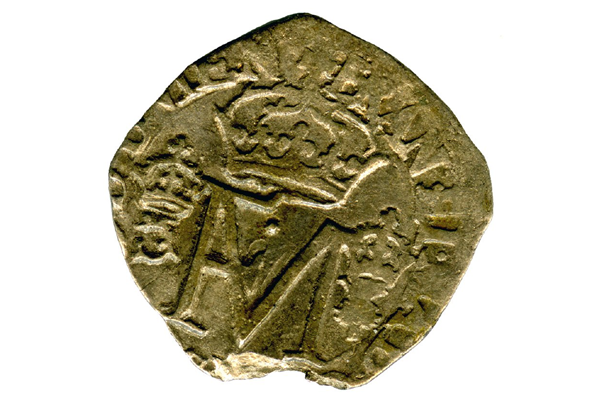
A Queen Mary & Francis Groat or Nonsunt coin
A Queen Mary & Francis Groat or Nonsunt coin, dated 1558, part of the Greenock Coin Hoard. The Groat or Nonsunt was valued at twelve pence. It was made of billon with a silver content of 50%. - 1978.423

A Queen Mary & Francis Groat or Nonsunt coin
A Queen Mary & Francis Groat or Nonsunt coin dated 1559, part of the Greenock coin Hoard. The Groat or Nonsunt was valued at twelve pence. It was made of billon with a silver content of 50%. - 1978.424 © McLean Museum and Art Gallery, Greenock.
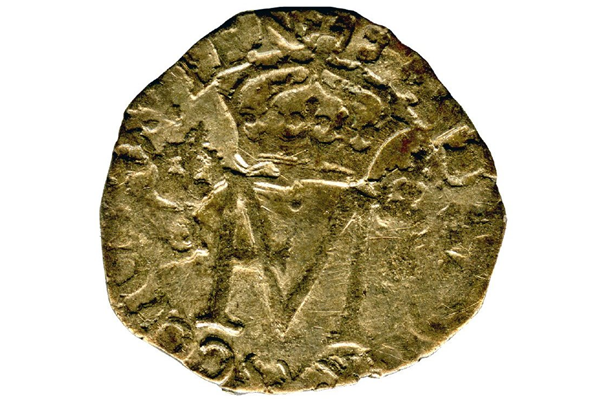
A Queen Mary & Francis Groat or Nonsunt coin
A Queen Mary & Francis Groat or Nonsunt coin dated 1559, part of the Greenock Coin Hoard. The Groat or Nonsunt was valued at twelve pence. It was made of billon with a silver content of 50%. - 1978.425 © McLean Museum and Art Gallery, Greenock.

A James VI Quarter Merk / Half Noble coin
A James VI Quarter Merk / Half Noble coin dated 1573, part of the Greenock Coin Hoard. The Quarter Merk was valued at three shillings and four pence and was made of silver. - 1978.426 © McLean Museum and Art Gallery, Greenock.



























